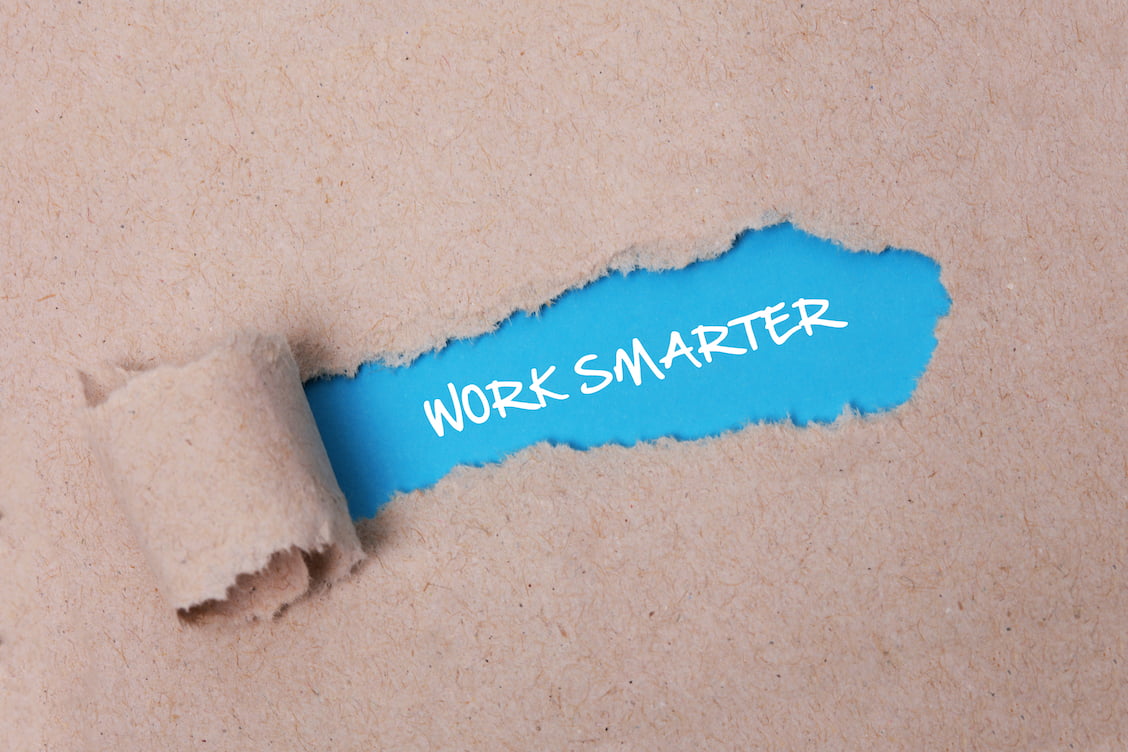
As an employer, you want your employees to be productive and efficient in their work. However, often, the focus is on working harder, rather than working smarter. Working harder can lead to burnout, decreased motivation, and reduced job satisfaction.
On the other hand, working smarter involves using strategies and tools that optimize productivity and make work easier and more enjoyable. In this article, we will explore various ways to help your employees work smarter, not harder. From prioritizing tasks to leveraging technology, we will discuss practical tips to increase productivity, improve job satisfaction, and achieve better results. By implementing these strategies, you can foster a work culture that values efficiency and innovation, leading to happier employees and a more successful business.
Why It’s Better to Work Smarter
Working smarter is better than working harder for several reasons. Here are some of the key benefits:
- Increased productivity: When employees work smarter, they can achieve more in less time. By focusing on high-priority tasks and using strategies and tools to optimize their workflow, they can get more done with less effort.
- Reduced stress and burnout: When employees work smarter, they are less likely to experience burnout and stress. They can manage their workload more effectively, which reduces the likelihood of feeling overwhelmed.
- Improved job satisfaction: Working smarter can also improve job satisfaction. When employees feel productive and efficient, they are more likely to enjoy their work and feel a sense of accomplishment.
- More time for creativity and innovation: When employees work smarter, they have more time and mental space for creativity and innovation. They can think more deeply about their work and explore new ideas that can benefit the company.
- Better results: Finally, working smarter can lead to better results. When employees are productive and efficient, they can deliver higher-quality work that meets or exceeds expectations.
In summary, working smarter is a more effective and sustainable way to achieve success in the workplace. It can help employees achieve more while reducing stress and burnout, increasing job satisfaction, and fostering creativity and innovation.
10 Ways to Work Smarter, Not Harder
Here are some effective ways to start working smarter, not harder:
1. Limit Multitasking
If you have too much going on, it may feel like you’re getting a lot done, but it can actually spread you too thin. The truth is, your brain can only focus on one thing at a time. Multitasking strains your brain’s ability to concentrate, as it tries to split your energy and attention between too many things.
When your employees constantly switch tasks, the quality of your work can suffer because they are not able to give each task the necessary focus and energy it deserves. To combat this, try taking a moment to slow down and take some deep breaths. It takes practice to get used to, but you and your team will ultimately work more efficiently by focusing on one task at a time, even if it feels like you are accomplishing less in the short term.
2. Invest in Training and Development
Invest in training and development programs that help your employees acquire new skills and knowledge that can help them work more efficiently and effectively. This may include time management training and informing your employees about the various efficient productivity methods such as the Eat the Frog method, the Time Management Matrix, and more.
3. Encourage Collaboration
Encourage collaboration among team members to promote creative problem-solving, share knowledge and resources, and optimize workflow. To encourage collaboration, start by setting up a communication system that makes it easy for team members to connect and share ideas. Provide opportunities for employees to work together on projects and initiatives, and make sure everyone is clear on their roles and responsibilities. Celebrate successes as a team and encourage open communication by regularly checking in with your employees to understand how they’re doing and whether they need any support. By creating a culture of collaboration, you can unlock the full potential of your team and achieve better results together.
4. Provide the Right Tools and Resources
Provide your employees with the right tools and resources to get the job done efficiently, such as project management software, communication tools, and necessary equipment.
Start by assessing your employees’ needs and identifying areas where they might need support, such as project management tools, communication platforms, or scheduling software. Offer training sessions to help employees become proficient with new tools and technologies, and make sure they have access to any necessary equipment or resources. Be open to feedback and suggestions from employees on how to improve productivity and streamline workflows. By providing the right tools and resources, you can help your employees manage their time more effectively, reduce stress, and achieve better results.
5. Automate Tasks
Automate repetitive tasks to save time and improve accuracy, such as using software for data entry or invoicing. Automating tasks can be a game-changer for employees who are looking to manage their time more effectively.
To help employees automate tasks, start by identifying areas where they are spending a lot of time on repetitive or administrative tasks. Research and implement automation tools that can streamline these tasks and free up employees’ time for higher-value work. Provide training and support to help employees get comfortable with new tools, and encourage them to experiment with different automation options to find the best fit for their needs. By helping employees automate tasks, you can help them work smarter, not harder, and achieve more in less time.
6. Offer Flexible Work Arrangements
Offer flexible work arrangements, such as telecommuting or flexible schedules, to help your employees work in a way that best suits their productivity and work-life balance. In fact, Upwork estimates that by 2025, 36.2 million Americans, which constitutes 22% of the workforce, will be working remotely.
Offering flexible work arrangements can be a great way to help employees manage their time more effectively. Start by assessing which arrangements will work best for your organization, such as remote work, flex time, or compressed workweeks. Communicate the options to employees and make sure they understand the guidelines and expectations for each arrangement.
7. Create an Engaging Work Environment
Create an engaging work environment that fosters creativity and innovation, provides opportunities for growth, and rewards hard work and achievement.
Creating an engaging work environment for your employees requires a combination of factors that can vary depending on the company culture and industry. However, there are some key steps that can help.
Firstly, it’s essential to communicate clearly and often with your team, ensuring they are aware of company objectives, their role in achieving them, and the value of their contribution.
Secondly, provide opportunities for personal and professional growth, such as training and development programs, and regular feedback to help them improve.
Thirdly, recognize and reward achievements and hard work, whether it’s through formal rewards or simply acknowledging their contributions in team meetings.
Finally, foster a positive workplace culture, including encouraging teamwork and collaboration, promoting work-life balance, and creating a supportive and respectful environment that values diversity and inclusion.
8. Recognize And Reward Good Work
Recognizing and rewarding good work is a great way to motivate employees and help them manage their time better. By acknowledging their hard work and achievements, employees feel valued and appreciated, which can increase their engagement and productivity. When recognizing and rewarding good work, it’s important to be specific and timely, providing meaningful feedback and rewards that align with the employee’s efforts and contributions. This can include bonuses, promotions, flexible work arrangements, or simply public recognition in a team meeting or email. By recognizing and rewarding good work, you can help employees manage their time better, by motivating them to work smarter and be more efficient in their role, leading to improved outcomes for your business.
9. Foster a Positive Work Culture
Fostering a positive work culture is essential for ensuring better time management among employees.
A positive work culture is one that values and respects employees, promotes teamwork and collaboration, and encourages innovation and creativity. It’s important to create a work environment where employees feel supported, motivated, and engaged. This can include offering opportunities for personal and professional growth, providing regular feedback and recognition, and promoting work-life balance.
Additionally, creating a positive work culture means promoting open communication and transparency, encouraging employees to share their ideas and concerns and providing a safe and respectful work environment. By fostering a positive work culture, employees are more likely to feel motivated, engaged, and productive, leading to better time management, improved outcomes, and a stronger bottom line for your business.
10. Use Data And Analytics to Inform Decisions
Using data and analytics to inform decisions is a powerful tool for helping employees manage their time better. By analyzing data on employee performance, work processes, and business outcomes, leaders can identify areas where time is being wasted or where improvements can be made. For example, if data shows that certain tasks are taking longer than expected, leaders can investigate and make changes to streamline processes, such as automating tasks or reassigning workloads. Similarly, if data shows that employees are working longer hours, leaders can identify potential causes, such as inefficient processes or lack of training, and address them accordingly.
The best way to receive and analyze time related data is to use a time tracking tool like Traqq.
Traqq is a time tracking software that provides real-time insights into employee productivity, allowing businesses to monitor their employees’ work activities, such as time spent on individual tasks, breaks, and overall productivity levels. This data can help leaders identify areas where employees are wasting time or struggling to complete tasks, so they can make informed decisions to improve work processes, training, or other aspects of the business.
By using data and analytics to inform decisions, leaders can help employees manage their time better, improving productivity, efficiency, and overall business outcomes.
10 Ways to Make Your Employees Work Smarter, Not Harder: Bottom Line
In conclusion, making your employees work smarter, not harder, requires a multifaceted approach that involves communication, training, delegation, and technology, among other strategies.
By providing the right tools and resources, encouraging collaboration and teamwork, promoting a positive work culture, and offering ongoing training and development, you can help your employees work smarter, improve productivity, and achieve better outcomes for your business.
Additionally, by using data and analytics to inform decisions and recognizing and rewarding good work, you can motivate your employees to work smarter and help them manage their time more effectively. By implementing these strategies, you can create a work environment that fosters innovation, efficiency, and productivity, leading to improved business results and a happier, more engaged workforce.





